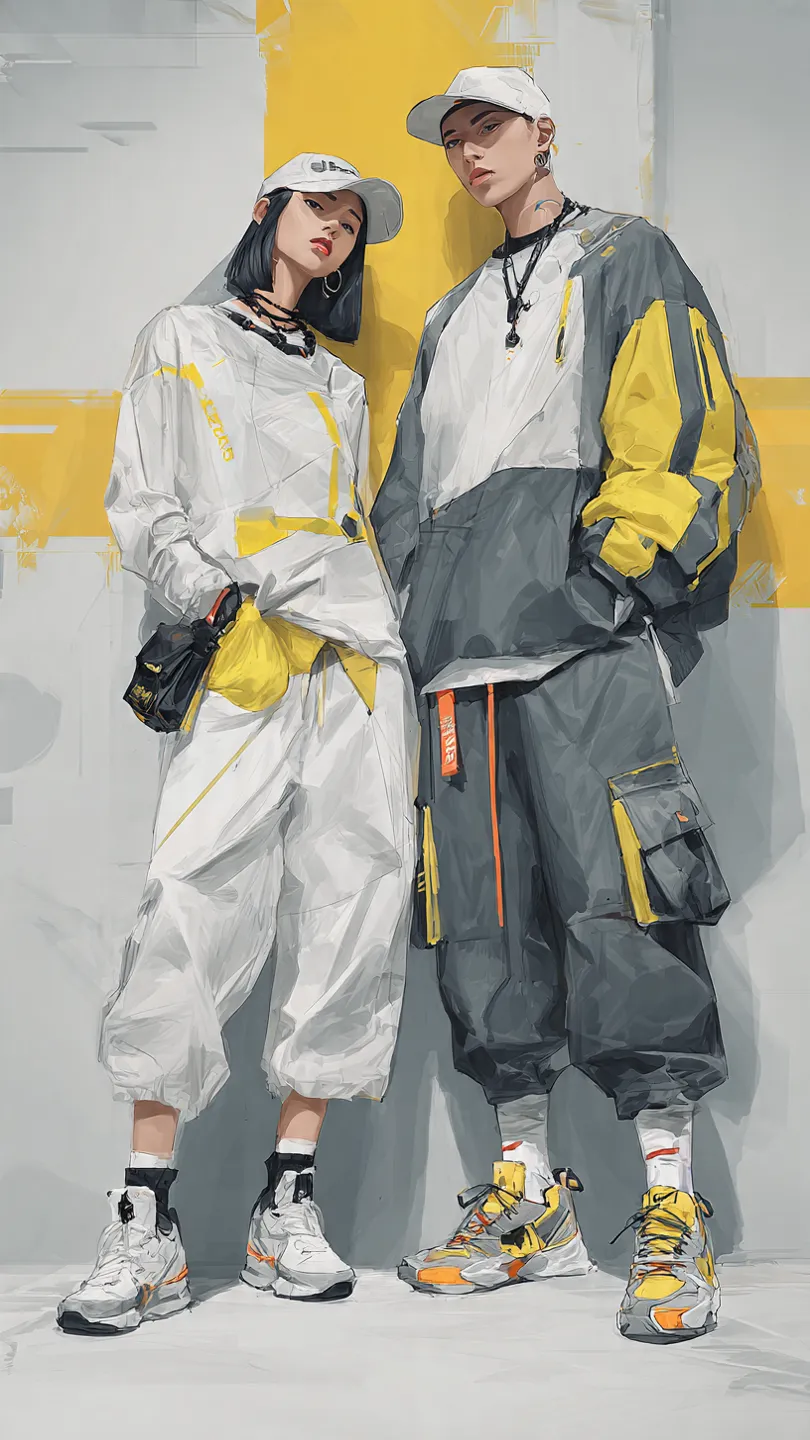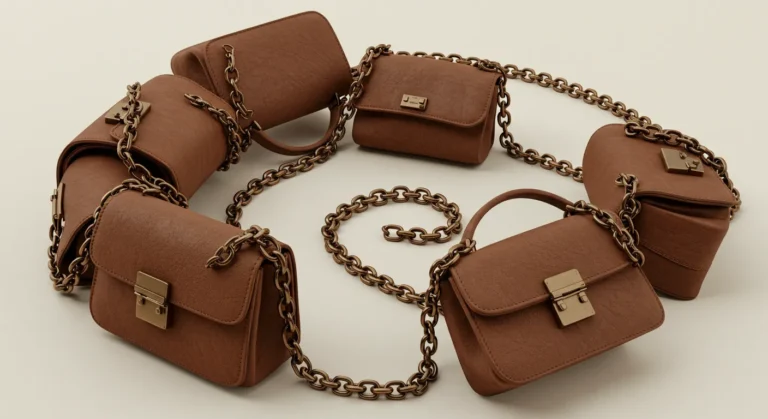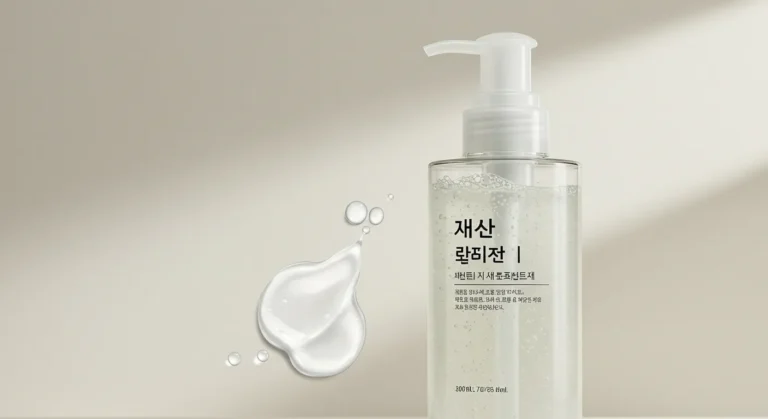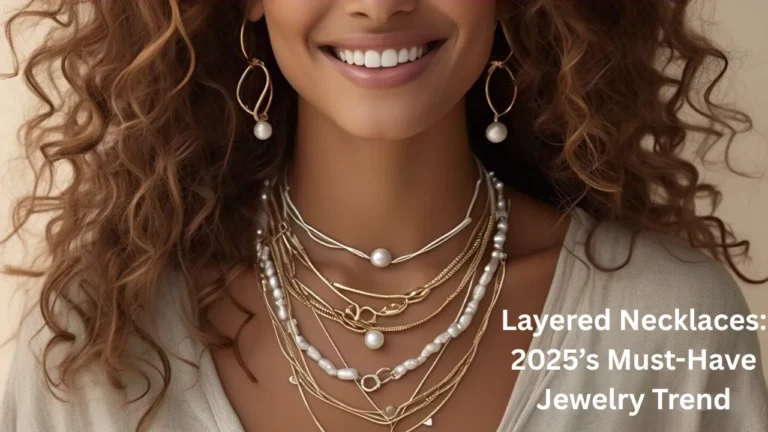best Sportsware Where Technology Meets fashion in 2025
Introduction
In today’s fitness-driven world,Sportsware has become much more than just gym attire — it’s a symbol of comfort, performance, and lifestyle. From professional athletes to everyday fitness enthusiasts, the right sportswear enhances mobility, boosts confidence, and helps achieve optimal results. Over the last decade, the sportswear industry has evolved dramatically, blending functionality with fashion to cater to a new generation that values both style and performance.
Modern sportswear brands have moved beyond the basics of sweat-wicking fabrics and lightweight materials. Today’s designs emphasize innovation — from smart textiles that regulate temperature to eco-friendly materials crafted from recycled plastics. Sportswear now plays a major role not only in athletic performance but also in streetwear and casual fashion, reflecting the global rise of the “athleisure” movement.
As health awareness continues to grow, so does the demand for versatile sportswear that transitions seamlessly from workouts to daily life. Whether it’s a pair of high-performance leggings, a breathable running top, or a sleek tracksuit, sportswear has become an essential part of modern wardrobes. This article explores the evolution, importance, materials, and latest trends shaping the future of sportswear — helping you understand why this industry is booming and how to choose the right gear for your lifestyle.
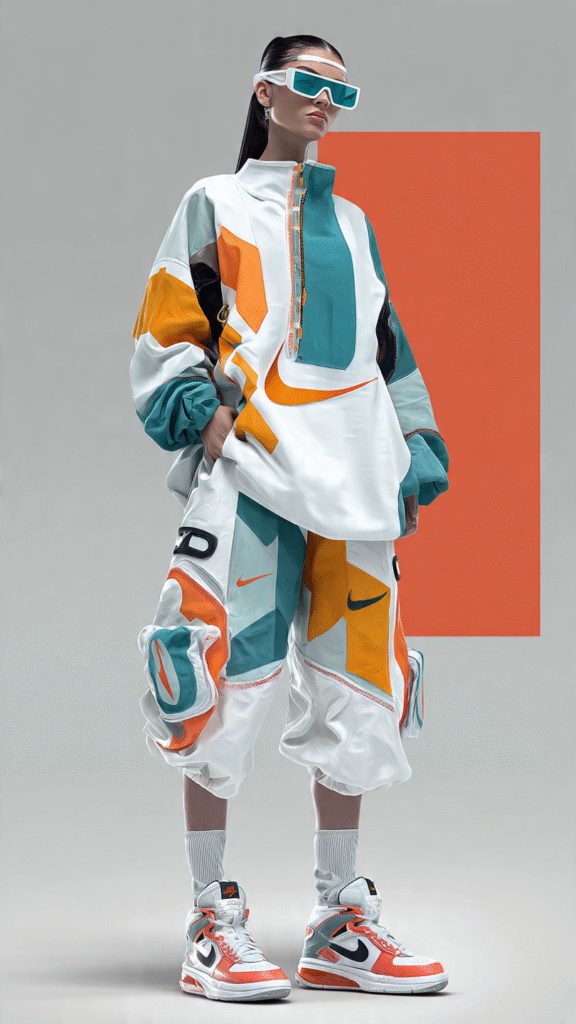
The Evolution of Sportswear
Sportswear has come a long way from the plain cotton tracksuits and basic gym shorts of the early 20th century. Initially, athletic clothing was designed solely for function — to provide comfort and freedom of movement. However, as sports became more competitive and globalized, the focus on performance-enhancing materials and innovative design intensified.
The true transformation began in the 1960s and 70s when sports brands like Adidas, Nike, and Puma started experimenting with synthetic fabrics such as nylon, polyester, and spandex. These materials offered better breathability, moisture control, and elasticity — key features for athletes pushing physical limits. By the 1980s, sportswear had begun influencing street fashion, marking the rise of athleisure, a movement that blurred the line between gym wear and casual wear.
In the 2000s, sportswear innovation reached new heights with the integration of technology and sustainability. Smart fabrics capable of tracking biometric data and eco-conscious materials made from recycled plastics or organic fibers became mainstream. Today, sportswear represents not just physical activity but a lifestyle statement — a fusion of performance, comfort, and aesthetic appeal.
The evolution of sportswear reflects the dynamic nature of human progress — merging science, style, and culture. What was once meant for the gym is now worn to cafes, offices, and even fashion runways. The future of sportswear promises even greater personalization through AI-driven design, 3D knitting, and sustainable innovation, ensuring that the next generation of sportswear is as smart as it is stylish.
Importance of Sportswear
The role of sportswear in today’s fitness landscape cannot be overstated. Modern athletes, gym-goers, and even casual joggers rely on sportswear not only for comfort but also for enhanced performance and safety. The right gear can make a significant difference in achieving fitness goals — improving endurance, reducing fatigue, and supporting recovery.
One of the key reasons sportswear is so vital is its functional design. Fabrics engineered with moisture-wicking technology help regulate body temperature, keeping the wearer dry and comfortable during intense workouts. Compression wear supports blood circulation, minimizes muscle fatigue, and speeds up recovery post-exercise. Moreover, ergonomic cuts and stretchable fabrics ensure full mobility, allowing individuals to move freely and confidently.
Beyond physical performance, sportswear also contributes to mental motivation. Wearing well-designed activewear boosts confidence and creates a sense of readiness. Studies even suggest that people who wear athletic clothing feel more motivated to exercise — a psychological phenomenon often referred to as “enclothed cognition.”
The importance of sportswear extends beyond the gym. In an age where health and wellness define personal identity, activewear has become a staple in daily wardrobes. From yoga studios to Zoom meetings, people prefer comfort blended with sophistication. The result? A booming market for multi-purpose sportswear that supports both fitness routines and fashion statements.
Ultimately, sportswear is not just clothing — it’s a tool that empowers individuals to lead active, confident, and healthy lives.
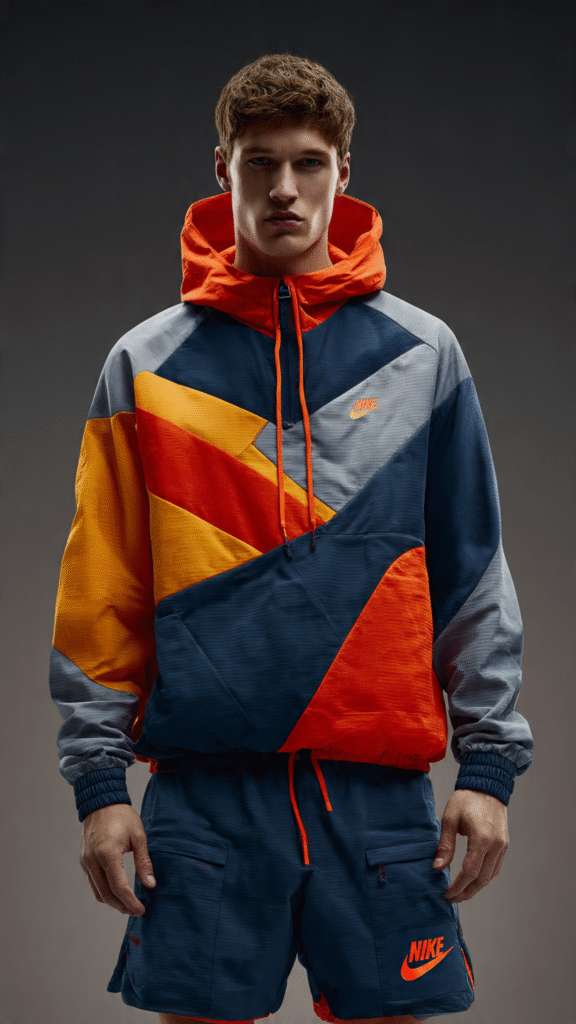
Top Materials
Behind every great sportswear design lies the science of fabrics and materials. The success of athletic apparel depends on how well it interacts with the body during movement, heat, and sweat. Modern sportswear materials are engineered to meet these demands while ensuring comfort, durability, and sustainability.
Polyester remains one of the most popular choices for sportswear due to its lightweight, quick-drying, and wrinkle-resistant nature. Spandex (Lycra or elastane) adds flexibility, making it perfect for yoga pants, compression tops, and cycling wear. Nylon is another durable option, offering excellent abrasion resistance and breathability.
For high-performance apparel, moisture-wicking fabrics are crucial. These textiles draw sweat away from the skin and allow it to evaporate, preventing discomfort and irritation. Many brands incorporate mesh panels or laser-cut ventilation zones for improved airflow.
In recent years, the spotlight has shifted to sustainable materials. Recycled polyester made from plastic bottles, organic cotton, and bamboo fabric are gaining traction among eco-conscious consumers. These materials offer softness, temperature control, and biodegradability without compromising performance.
Additionally, smart textiles are revolutionizing the industry — fabrics that can monitor heart rate, muscle activity, or even adjust temperature automatically. This technological integration represents the future of sportswear: responsive, sustainable, and highly functional.
Latest Trends in Sportswear Fashion
Sportswear is no longer limited to gym floors or running tracks — it’s a global fashion trend. The rise of athleisure has redefined how we view activewear, merging performance with everyday style. In 2025, the sportswear market continues to thrive on trends that balance innovation, sustainability, and self-expression.
One major trend is minimalist luxury — clean silhouettes, neutral tones, and high-quality fabrics that look chic both at the gym and on the streets. Brands are investing in timeless, versatile designs rather than loud, one-season pieces.
Another key trend is gender-fluid sportswear, embracing inclusivity with unisex designs that prioritize comfort and self-expression over traditional gender norms. Sustainability also dominates the conversation, with major brands pledging carbon-neutral production and using biodegradable fabrics.
Color trends for modern sportswear include earthy neutrals, muted blues, and energetic pops of coral or lime green — shades that reflect optimism and balance. At the same time, techwear-inspired sportswear is gaining attention, featuring water-resistant materials, multifunctional pockets, and futuristic cuts.
Celebrities and influencers continue to play a major role in popularizing these trends, collaborating with top brands to launch exclusive collections. Whether you’re into yoga, running, or streetwear fashion, the latest sportswear trends prove one thing — comfort and style can coexist effortlessly.
Choosing the Right Sportswear
Selecting the perfect sportswear for your body type is not just about aesthetics — it’s about optimizing comfort, confidence, and performance. The right outfit can improve how you move, regulate temperature, and even boost your motivation to work out. Since everyone’s body is unique, understanding what suits your physique can make a noticeable difference in both style and functionality.
For individuals with a lean or athletic build, fitted tops and compression wear often work best. These styles enhance muscle definition and support movement without restricting flexibility. Leggings, cycling shorts, and compression tees are excellent choices, offering both mobility and a streamlined appearance.
If you have a curvier or fuller figure, opt for supportive fabrics that offer stretch and breathability. High-waisted leggings, sports bras with adjustable straps, and looser tops can balance comfort with confidence. Look for moisture-wicking materials and strong seams to avoid chafing during intense workouts.
Those with a pear-shaped body may prefer darker leggings paired with bright or patterned tops to draw attention upward. Meanwhile, individuals with an apple-shaped body benefit from lightweight tops that don’t cling to the midsection, combined with compression leggings for added support.
It’s also essential to choose the right sports bra and footwear. A well-fitted sports bra minimizes strain and ensures stability during movement, while properly cushioned shoes prevent injuries.
Above all, prioritize comfort and confidence. Sportswear should make you feel empowered, not self-conscious. Whether you’re lifting weights, running, or doing yoga, your outfit should support your body’s natural rhythm. When chosen wisely, sportswear becomes more than clothing — it becomes your partner in performance and self-expression.
The Role of Technology
Technology has become the backbone of modern sportswear innovation, transforming how athletes train, recover, and perform. What used to be simple gym wear has evolved into tech-enhanced apparel that merges science with fashion. From smart textiles to data-driven designs, technology is reshaping the industry at every level.
One of the most revolutionary advancements is the creation of smart fabrics — materials embedded with sensors that monitor heart rate, breathing, temperature, and muscle activity. These intelligent garments provide real-time feedback, helping athletes optimize workouts and prevent injuries.
Another major innovation is 3D knitting and custom-fit technology. This approach allows brands to create seamless, body-specific garments that fit like a second skin. Not only does this reduce material waste, but it also enhances comfort and flexibility.
Temperature-regulating fabrics are also gaining traction. They use microcapsule technology to absorb, store, and release heat depending on the wearer’s body temperature, ensuring maximum comfort across conditions.
Meanwhile, eco-technology is revolutionizing sustainability. Brands are developing biodegradable fabrics and waterless dyeing processes to reduce environmental impact. Wearable tech integration — such as Bluetooth-enabled sportswear that syncs with mobile apps — allows athletes to track progress seamlessly.
The rise of AI-driven design tools has further elevated the industry. By analyzing user data and feedback, AI can help brands design sportswear that meets specific athletic needs. In short, technology has turned sportswear into a fusion of fashion, function, and data science, setting the stage for a smarter, more sustainable future.
Sustainable and Eco-Friendly Sportswear
In an era defined by environmental awareness, sustainability has become a cornerstone of the modern sportswear industry. Consumers today demand transparency, ethical sourcing, and eco-conscious materials from the brands they support. As a result, sportswear companies are reimagining how their products are made — from raw materials to manufacturing and packaging.
The shift begins with recycled materials. Many leading brands now produce leggings, jackets, and shoes from recycled polyester made from discarded plastic bottles and ocean waste. These materials not only reduce landfill waste but also maintain the performance qualities athletes expect — lightweight, durable, and moisture-wicking.
Organic cotton, bamboo fibers, and Tencel are also popular for their breathability and biodegradability. These natural materials provide softness while minimizing environmental harm. Some companies even incorporate plant-based dyes and waterless coloring methods to conserve resources.
Sustainability also extends to ethical production. Brands are investing in fair labor practices, renewable energy sources, and transparent supply chains. Consumers can now trace the origin of their garments through digital tags or QR codes, ensuring accountability.
Beyond materials, the concept of slow fashion is reshaping sportswear consumption. Instead of chasing fast-changing trends, consumers are choosing timeless, high-quality pieces designed to last. This not only benefits the planet but also encourages mindful shopping.
Ultimately, sustainable sportswear reflects a deeper philosophy: that fitness and health shouldn’t come at the planet’s expense. The future belongs to brands that innovate responsibly, blending performance with purpose.
The Influence of Celebrities and Athletes
Celebrities and athletes have long been the trendsetters of the sportswear world, shaping public perception and influencing consumer choices. From endorsement deals to personal collaborations, their impact on fashion and fitness culture is undeniable.
Athletes like Serena Williams, Cristiano Ronaldo, and LeBron James have launched successful sportswear lines that combine professional functionality with streetwear appeal. Their designs often emphasize performance, durability, and individuality — inspiring millions to embrace an active lifestyle.
Meanwhile, celebrities outside of sports, such as Beyoncé (Ivy Park) and Rihanna (Fenty Puma), have transformed activewear into luxury fashion. These collaborations merge glamour with athleticism, catering to consumers who value both style and comfort.
Social media amplifies this influence. Platforms like Instagram and TikTok allow athletes and influencers to showcase their favorite brands, sparking viral trends overnight. A single post featuring a pair of stylish leggings or sneakers can drive massive sales within hours.
The rise of celebrity-endorsed athleisure has also blurred the boundaries between gym wear and daily fashion. Today, it’s common to see people wearing sportswear for errands, travel, or even casual business settings — a testament to how powerful celebrity influence has become.
However, this trend isn’t just about marketing. It’s also about representation and empowerment. Celebrities use their platforms to promote inclusivity, body positivity, and diversity in sportswear — encouraging brands to design for all shapes, sizes, and backgrounds.
In short, celebrity influence has turned sportswear into a cultural movement — one that celebrates individuality, performance, and self-expression while driving massive growth in the global fitness industry.
The Future of Sportswear
The future of sportswear is unfolding at the intersection of technology, sustainability, and personalization. As consumer demands evolve, brands are pushing the limits of innovation to create apparel that not only enhances athletic performance but also adapts intelligently to the wearer’s body and environment.
One of the most exciting developments shaping the future of sportswear is the integration of smart textiles. These fabrics are embedded with sensors that monitor heart rate, muscle movement, and temperature in real-time, allowing users to track performance without bulky gadgets. Imagine wearing a t-shirt that syncs to your phone and tells you when to rest or hydrate — this isn’t a fantasy anymore; it’s happening now.
Another area of innovation is 3D body scanning and custom-fit design. Advanced AI-driven technologies can analyze a person’s physique and produce perfectly tailored sportswear, eliminating discomfort and improving functionality. Personalized design is becoming the new norm, ensuring that every garment performs optimally for the individual wearing it.
Sustainability will continue to lead future innovations. We’re witnessing rapid progress in biodegradable fabrics, lab-grown fibers, and circular production models where worn-out clothes can be recycled into new garments. Brands are investing heavily in closed-loop manufacturing to reduce waste and carbon emissions.
Moreover, AI-powered fashion forecasting allows brands to predict style trends and consumer preferences months in advance. This means fewer unsold products, less waste, and more alignment with real consumer needs.
The metaverse is also beginning to influence sportswear, with digital clothing and NFTs gaining traction in virtual fitness spaces. As virtual workouts and fitness gaming expand, digital sportswear collections could become a new trend — blending physical performance with digital expression.
In the next decade, expect sportswear to become smarter, greener, and more adaptive — seamlessly merging innovation, sustainability, and comfort to define the next era of active fashion.
How to Care for Your Sportswear
Proper care and maintenance are essential for extending the life of your sportswear and preserving its performance features. Activewear is made from specialized fabrics designed to stretch, wick moisture, and endure rigorous activity — but without proper care, these materials can quickly lose their effectiveness.
The first and most important rule is to read the care label. Sportswear often contains blends of spandex, nylon, or polyester that require gentle handling. Avoid high heat and harsh detergents, as they can break down fibers and reduce elasticity. Always use cold water and mild detergent, and skip fabric softeners — they can clog the moisture-wicking pores in performance fabrics, making them less breathable.
After washing, it’s best to air dry your sportswear instead of using a dryer. Excessive heat from dryers can damage synthetic materials and lead to shrinkage. Hanging garments in a shaded area preserves both the fabric and color.
Another key tip is to wash sportswear separately from rough fabrics like denim or towels. These can cause pilling or abrasions on smooth performance surfaces. Turning garments inside out before washing also helps protect colors and printed logos.
For odor control, white vinegar or baking soda can be added to the rinse cycle — both natural and effective solutions for removing sweat smell without harming fabrics.
If your sportswear includes compression gear or items with elastic bands, avoid stretching or wringing them when wet. Gently squeeze out water and lay them flat to dry. Store them properly, folded or hung in a cool, dry place to maintain shape and structure.
Finally, rotate your activewear. Wearing the same set repeatedly without rest can wear down elastic fibers faster. Having multiple outfits ensures each has time to recover between workouts.
By following these simple yet effective care tips, you’ll extend the life of your sportswear — keeping it looking, feeling, and performing like new for years to come.
FAQs
What is sportsware?
Sportsware refers to specially designed clothing and accessories that support athletic performance, comfort, and movement. It includes items like gym wear, training shoes, compression gear, and lifestyle activewear used for workouts, sports, and casual activities.
What’s the difference between sportsware and activewear?
While both are performance-oriented, sportsware is more technical—built for specific sports or workouts—whereas activewear blends function with fashion for everyday wear.
Which fabrics are best for sportsware?
The best sportsware fabrics are moisture-wicking, breathable, and stretchable, such as polyester blends, spandex, nylon, and performance mesh. These materials help regulate body temperature and keep you comfortable during physical activity.
How should I choose the right sportsware?
Choose sportsware based on your activity type, climate, and comfort needs. Look for fit, flexibility, fabric quality, and sweat absorption. For example, runners benefit from lightweight, quick-dry materials, while gym-goers prefer stretchable fabrics with compression support.
Can sportsware be used for casual wear?
Yes, absolutely. Modern sportsware is designed to transition seamlessly from workout sessions to casual outings. Many brands now combine athletic functionality with streetwear style for an effortless everyday look.
What are the top sportsware brands in 2025?
Leading sportsware brands in 2025 include Nike, Adidas, Under Armour, Puma, Lululemon, and Gymshark. These brands focus on innovation, sustainability, and smart-fabric technology to enhance comfort and performance.
Conclusion
The world of sportswear has evolved far beyond its original purpose of providing comfort during exercise. Today, it represents a perfect harmony between functionality, fashion, and innovation — a reflection of how deeply fitness and lifestyle have become intertwined. From classic performance gear to AI-powered smart apparel, the evolution of sportswear tells a story of progress, creativity, and self-expression.
As we’ve explored, modern sportswear is about more than just looking good — it’s about enhancing performance, promoting confidence, and supporting sustainability. The latest designs use cutting-edge materials that adapt to the body, regulate temperature, and provide unmatched comfort. Meanwhile, sustainable innovations are setting new industry standards, proving that style and responsibility can coexist.
The influence of technology and celebrity culture continues to shape global trends, turning athletic wear into a mainstream fashion statement. Whether it’s high-end collaborations, minimalist designs, or eco-friendly collections, today’s sportswear adapts to every personality and lifestyle.
Looking ahead, the future of sportswear promises even greater possibilities — from intelligent fabrics that track biometric data to circular fashion systems that eliminate waste. This dynamic industry is driven by a shared goal: to empower individuals to move, feel, and live better.
In essence, sportswear has become a symbol of modern living — blending the pursuit of health with personal style and environmental mindfulness. It’s more than clothing; it’s a reflection of who we are and how we choose to express ourselves through movement, performance, and purpose.
So whether you’re training for competition, practicing yoga, or simply embracing an active lifestyle, the right sportswear will always be your most trusted companion — helping you look your best, perform your best, and live your best life.

